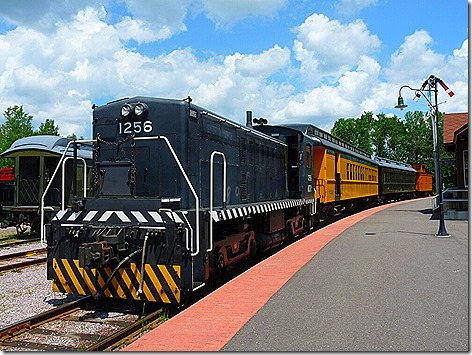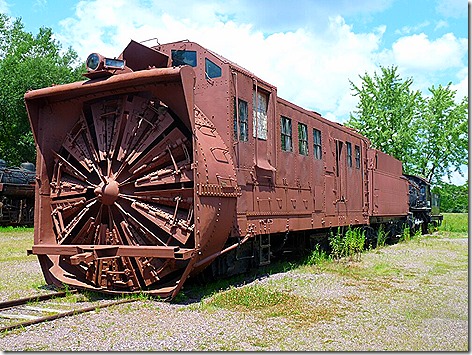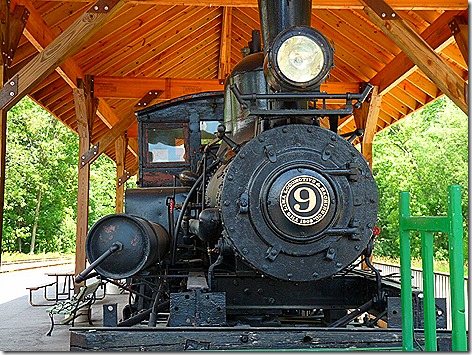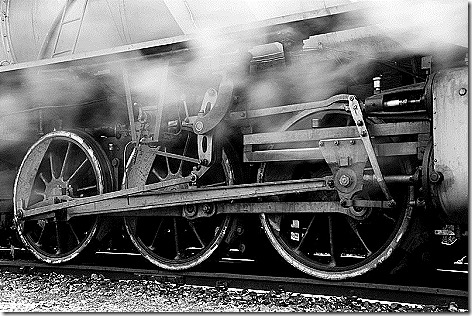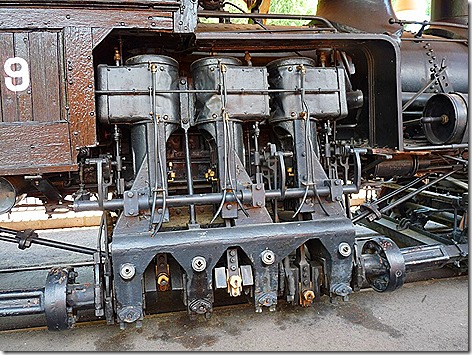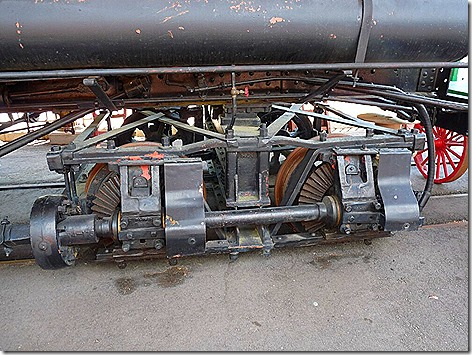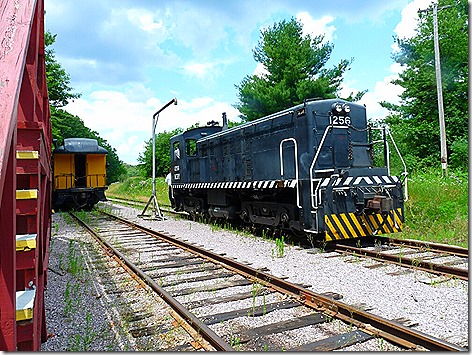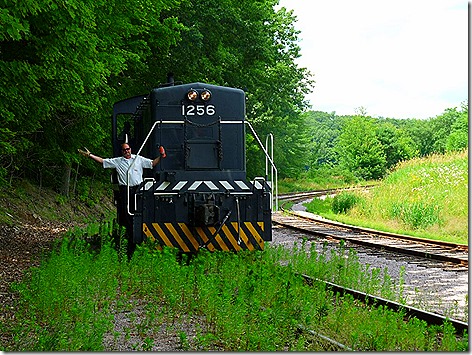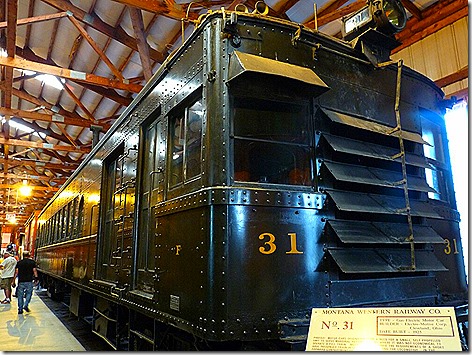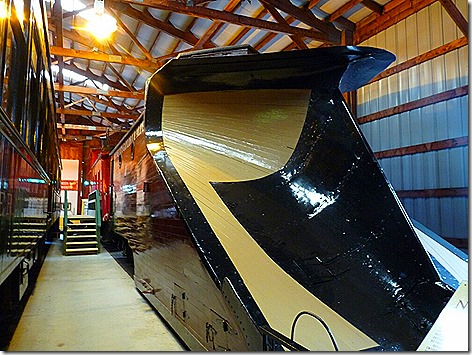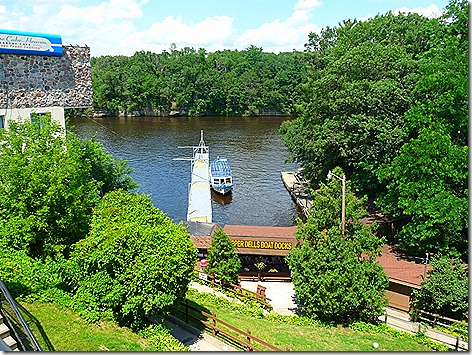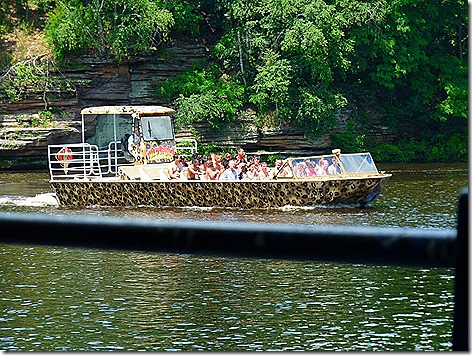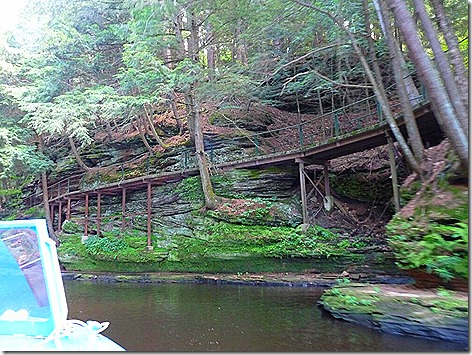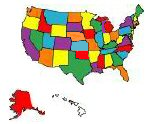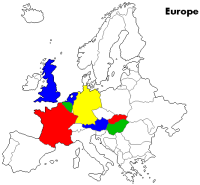Monthly Archives: July 2013
All Trains, All the Time . . .
First off, if you don’t like trains, this blog is probably not for you.
You’ve been warned.
asdfdf
About 11:30 this morning Jan and I headed about 30 miles south of here to the small town of North Freedom, WI to take a train ride and visit the Mid-Continent Railroad Museum there.
We were scheduled to take the 1pm train ride so we got there about 12:30 to have a chance to check out the trains and of course the gift show before our ride.
The gift shop had this display of famous train ad posters. Don’t think they’d be able to do these today without a lot screams of protest. Too bad.
While Jan stayed in the air-conditioned station I spent some time walking about the train yard.
First I checked out our upcoming ride. I thought the engine looked kind of familiar, and after checking it out, discovered that this was a type of engine built for switcher use on military bases, so I know I saw them when I was doing DOD contract work.
This one was built in 1954, and rebuilt in 1986 with a new Cat engine.
asdfdf
They even have a number of unusual train building, including this early 1900’s crossing tower, used to control several crossing gates in an area.
asdfdf
This unique snowplow dates from 1912 and was in use as late as 1986. Although it required a locomotive to propel it, it had it’s own steam boiler system to power the rotary blade.
asdfdf
This is another unusual locomotive. It’s a 2-10-0 ‘Decapod’, built in 1928 by the Baldwin Locomotive Co, and was in use up until 1959. The longest and heaviest locomotive in the collection, it is schedule for rebuilding and refurbishing to running condition.
asdfdf
Built in 1884, this Baldwin 2-6-0 locomotive was rebuilt in 1904 and remained in commercial service until 1963. Bought by the museum, it was in service here until 1991. It too is scheduled for refurbishing.
asdfdf
Another unusual loco, this Shay has an offset boiler that allows the engineer a better view of the track in front of him without hanging his head out the window in the weather. But this means the boiler is smaller and the locomotive has less range. But since this was primarily a local switcher, it wasn’t a big problem.
The other unusual thing about this Shay is its drive mechanism. While most steam locomotives have steam cylinders on each side and the wheels on each side are driven separately.
But this Shay has vertical steam cylinders that drive only the wheels on one side.
But since these are solid-axle wheels, these worm gear drives transmits power to both sides.
At 1 o’clock the conductor yelled “All Aboard” and we headed out in the Wisconsin countryside on our 14 mile, 55 minute ride. Arriving at the end of the line outside the remains of La Rue, a town that used to be the home to a large mining operation, we got off the train and while we were all feeding the mosquitos, our engine was switched to a siding and moved back to the now new front of the train for our trip back to the museum.
Now back on the main track, our engine couples back to our caboose and we headed back to the station.
Getting back, I check out the rebuilt equipment housed in a large building across the street.
This beautiful example of a Great Northern caboose was built in 1925 and was in service until 1970.
asdfdf
This is a self-propelled passenger car built to run train routes that would be uneconomical for a larger train. Nicknamed “Doodlebugs”, these combined a power unit and a passenger/baggage area into one piece of equipment, and could also pull a couple of freight cars when necessary. Built in 1925, this unit served until the 1950’s.
asdfdf
This is another version of a snowplow. Built in 1906, and being pushed by one or more locomotives, it was especially effective in removing heavy snow drifts up to 16 feet in height. This one was last used in 1959.
Leaving the train museum we headed back to Wisconsin Dells. Based on online reviews, we planned on having an early dinner at Colotlan Mexican Restaurant, right in the heart of downtown Dells.
A small place with only about 15 tables and some counter stools, it’s a family place with Carlos, the father, and his wife and daughter running the place. Good chips, good salsa, and delicious food really make this place a find.
Jan had her favorite Chile Rellenos, and I had Bistec y Rajas y Queso, Steaks Chunks grilled with poblano peppers and covered in cheese. Very, very good.
Getting back home, and since we’re looking forward to the new Bruce Willis movie, RED2 coming out, we decided to watch our DVD copy of the original RED, which came out in 2010. If you haven’t seen it, check it out. It’s a great movie, really funny with a lot of action, and some really great characters.
———————————————————————————————————————-
Thought for the Day:
"When you have the facts, argue the facts. When you have the law, argue the law. When you have neither, shout." – Lawyers’ adage
asdfdf
———————————————————————————————————————-
Here’s a repost of our visit to another great, even bigger, train museum that we were at in July 2009 when we were in the Lancaster, PA area.
The indoor part of the Railroad Museum resembles a large railroad station, with multiple tracks full of trains.
I headed down to the Big Train Museum, or, The Railroad Museum of Pennsylvania, as they call it.
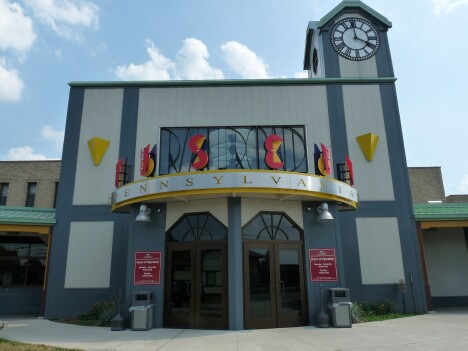
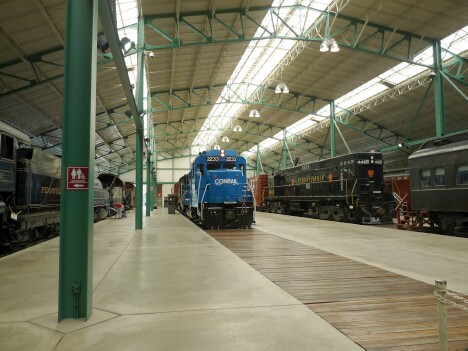
asdfdf
This is the John Bull. It’s a replica of the first locomotive to run on a railroad in America.
In 1831 the first railroad was built between Philadelphia and New York and the John Bull was the engine. It’s hard to think now of how this revolutionized travel in the US.
It cut the travel time from Philadelphia to New York from 2 days by coach to 5 HOURS!. It’s hard to do that by car now.
I saw this same locomotive last week in the Smithsonian, but wasn’t able to get close enough to read the display due to the crowds. I was surprised to learn here that the one I had seen in the Smithsonian was the REAL John Bull, from 1831.
It ran a regular route until 1866, then traveled around the US on exhibitions until it was donated to the Smithsonian in 1884.
This beautiful example of a 2-6-0 Mogul locomotive carried silver ore on the Virginian & Truckee railroad in Nevada from 1875 to 1944.
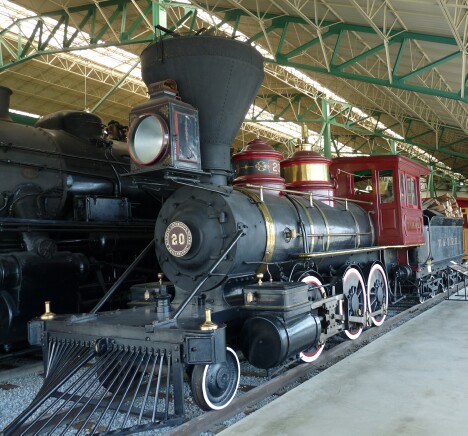
asdfdf
The ’2-6-0′ type of nomenclature describes the layout of a locomotive’s wheels, and only applies to steam type locomotives.
The Mogul above has 2 small wheels up front, 6 drive wheels in the middle, and no small wheels in the rear. Thus, it is a 2-6-0.
This locomotive #7002, dates from 1902 and was the first one in regular service to exceed 100 mph.

asdfdf
Note that this one is a 4-4-2, although you can just barely see the 2 wheels under the tender at the far right of the photo.
Arguably the largest locomotive ever built was the ‘Big Boy’ built for the Union Pacific to pull large coal trains up and down the Rockies out West.

asdfdf
Note that this one is a 4-8-8-4. That’s a lot of wheels.
Below is a type of locomotive I’d never heard of.
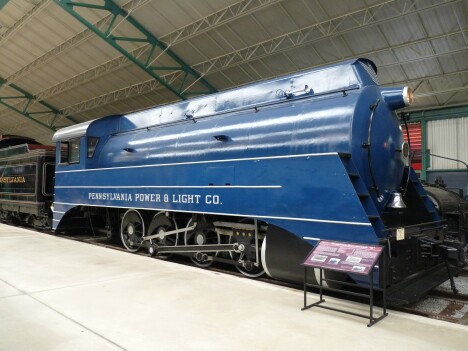
asdfdf
This one is unusual in that it doesn’t have a boiler or generate its own steam. It’s basically just a big thermos bottle. It’s filled up with live steam from a stationary boiler and then operated, usually in the rail yard, until it needed to be refilled.
Outside was even better.
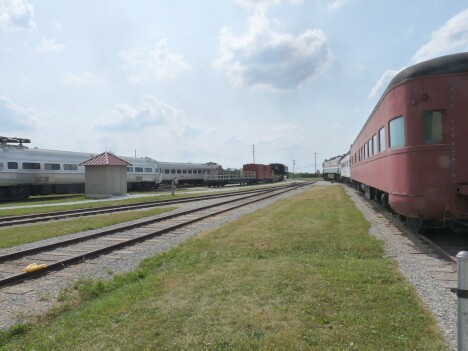
asdfdf
It was a rail yard full of more trains. And it has a real operating roundtable, used to move locomotives in and out of the yard.
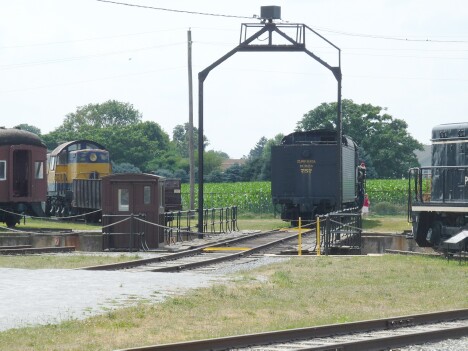
asdfdf
Even more locomotives…
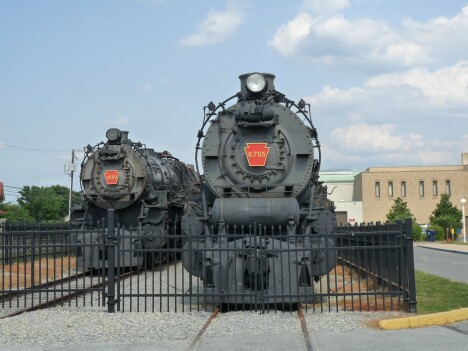
asdfdf
And a rail crane used to lift derailed engines and cars back on the track.

asdfdf
I’ve always been fascinated by the big steam engines and this was a great chance to see them up close.
———————————————————————————————————————-
Thought for the Day:
"When you have the facts, argue the facts. When you have the law, argue the law. When you have neither, shout." – Lawyers’ adage
asdfdf
Who Needs A Water Park . . .
to get soaking wet, when all you need is a JetBoat.
————————————————————–
Who knew that Camping World and Amazon were in on the scam too.
Peter must be so upset.
First off I want to thank everyone for their comments and support after yesterday’s blog. It’s much appreciated.
A couple of readers had asked about these ‘Cheater’ Boxes. And yes, that’s what they’re called, “Cheater Boxes”, and how they differ from what I did.
These adapters plug into both the 30 amp and 20 amp receptacles on your pedestal, giving you a 50 amp supply.
Kind of.
Many RV’ers don’t realize that what we get from a 50 amp receptacle on a pedestal is actually two 50 amp circuits, for a total of 100 amps. That’s why you see two ganged circuit breakers in the box.
So this adapter actually gives you half of what you get from a normal 50 amp circuit, but it would allow you to run both AC’s
Kind of.
The one drawback with these adapters is that many times they don’t work. If the 20 amp receptacle on the pedestal has a GFCI on it, and most now days do, then this adapter will not work. It will pop the GFCI as soon as it’s plugged in.
So as Emily Latella says, “Never Mind”.
Since these adapters usually cost over $100, you might want think twice about getting one for the few times you would need it and be able to use it.
————————————————————–
On a more fun note, Jan and I headed out about 10am for breakfast at Mitzi’s and then a couple of boat rides, one slow, and one fast.
Very, very fast.
So after a really good breakfast at Mitzi’s Family Restaurant, we headed down to The Original Wisconsin Ducks dock for a one hour, half land, half water tour through the Wisconsin Dells along the Wisconsin River.
We’ve taken Duck rides all over country, from Seattle to San Francisco to Washington and Philadelphia, and the Wisconsin Ducks are different.
First off, there are two duck companies here in the Wisconsin Dells, the only place in the country where that is true. In fact, starting 1946, the Dells was the first place in the country to have a Duck ride. And the back and forth story of the ducks is kind of interesting. Here’s the Wikipedia story.
In 1946 a Milwaukee native named Mel Flath brought the first amphibious truck (DUKW) to the Wisconsin Dells. It was an impulse buy that he had made at a government auction in California; the trip’s purpose had been to purchase war surplus trucks. Mel opened the "Dells Amphibian Line", which gave 90-minute tours in the Wisconsin River, exposing tourists to the area’s famous sandstone formations. Mel eventually sold his duck fleet to the Associated Boat lines in 1952, which renamed the company the Wisconsin Ducks, Inc. In 1952 the Wisconsin Ducks, founded by Jack B. Olson, began offering tours of the river dells and adjacent areas using decommissioned amphibious DUKW vehicles from World War II. However, duck competition was far from over after the 1952 sale. Flath opened up a duck ride again briefly from 1964 to 1966. When he was bought out again, the Soma Boat Company opened its own duck ride on Mirror Lake, near Lake Delton, which it called the Aquaducks. In response to the competition, Wisconsin Ducks, Inc. assumed the name "Original Wisconsin Ducks". Aquaducks existed from 1968 until its sale to the boat lines in 1976. In 1977 yet another duck ride began, this one by Flath’s daughter and son-in-law, George and Suzanne Field, named Dells Duck Tours, Inc., operating from the same property as Mel had 30 years earlier. This time sporting a red, white and blue exterior, these ducks, while not the "original" ducks that were first brought to the dells, were still World War II production models. Today, the Dells Duck Tours, Inc. are known as the Dells Army Ducks after a paint scheme change in 2002.
The second thing is that this company has almost 90 ducks in service, not the 3 or 4 that most companies have. In fact this is the first time we taken a Duck ride without having a reservation for a particular time. Here you just show up whenever, and catch the next Duck, with one leaving every few minutes.
As it turned out, our Duck was a WWII original. Built in 1942, our Duck really looks it. It’s amazing that these things, built over 70 years ago, still are making 6 to 8 tours a day.
But some of them don’t survive. Here’s the Duck Graveyard.
The third thing is that we had Jocelyn, our first female Duck driver.
And she drives the Duck like a Indy car driver. Every other Duck ride we’ve taken starts out putt-putting through town at a sedate 20 mph or so. But the Wisconsin Ducks have their own race course, errr, roads.
They have 8 miles of paved single-lane, one-way roads through the woods and hills along the Wisconsin River. And Jocelyn drives like something big and mean is chasing her.
The Duck is capable of about 50mph on land, and I swear she had it floored all the way. Some of the dips felt like being on a roller coaster. Pretty good for a Pre-Dental College student.
The other thing that was fun is that most Duck rides drive slowly down the ramp and into the water. Our Duck went blasting down the ramp and hit the water at about 20 mph throwing up a large wave all around to the squeals of the passengers.
But besides the excitement, we did have some very scenic views along the river and through the woods, hills and dales. Or is that dells?
The competition: Dells Army Ducks.
So after our best Duck ride ever, we headed back into town for our next boat, the Dell’s JetBoat Ride
The one we were riding on, the Condor, is the fastest and most powerful on the river. At over 55mph, and with 3 400+hp V-8 engines, it literally flies across the water.
And stops on a dime. And then the bow digs in. And then a huge wave comes over the bow and soaks everyone.
The JetBoat’s other trick is to be bombing along at 50+ mph and then the pilot cranks the wheel all the way over. The boat goes into a flat spin, traveling 360 degrees, and then comes around and back out the same direction. Without ever slowing down.
But with the obligatory large wave washing over the side of the boat.
The trip out wasn’t too bad since we had a trailing wind for the most part. But coming back to the dock, the headwind sent the water over the bow with a vengeance. And we got soaked to the bone.
In fact we were so wet that on our way back to the rig, we stopped off to get the truck washed. And the bills in my wallet were so wet, the machine wouldn’t take them. Luckily I had a plastic bag that kept my camera dry for the most part.
But the ride was a blast!
And the scenery was great too.
Tomorrow, a train ride.
———————————————————————————————————————–
Thought for the Day:
"Accustomed to trample on the rights of others, you have lost the genius of your own independence and become the fit subjects of the first cunning tyrant who rises among you." — Abraham Lincoln
sdfgfdgs




